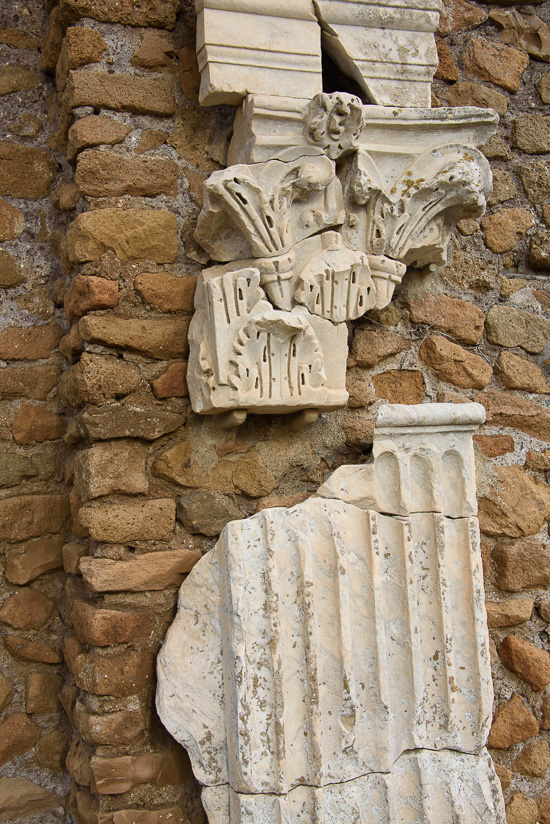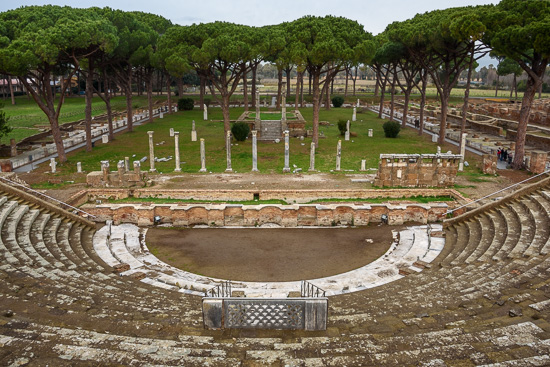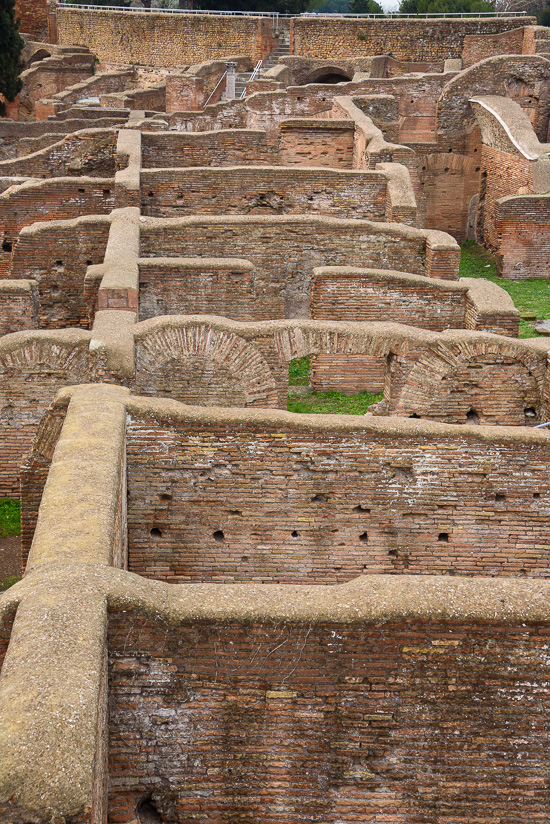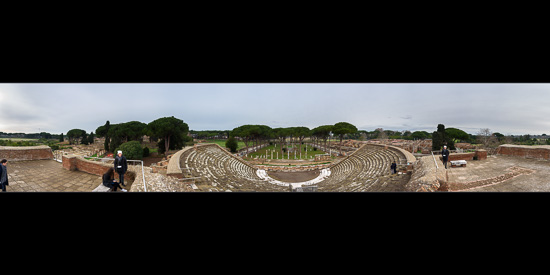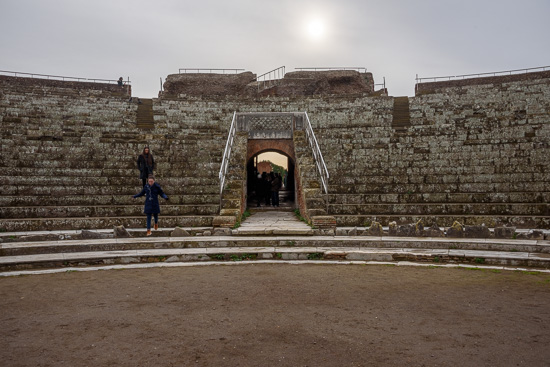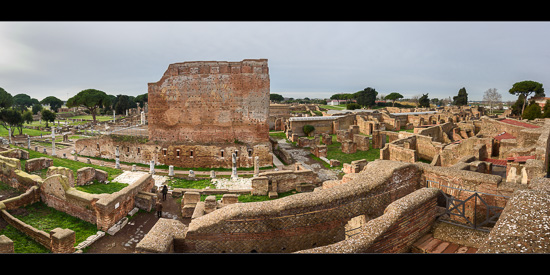Hidden Treasures…
by Rodney Campbell on Feb.02, 2018, under Life, Photography
My wife had really wanted to visit one of the preserved Roman villages in the in the shadow of Mount Vesuvius. Pompeii and Herculaneum being the two most well known sites buried and thus preserved by the erupting volcano.
Hidden Treasures
Unfortunately the weather in Italy was still looking a bit iffy (rain), and we really couldn’t face the 3 to 4 hour journey each way to either of these locations (especially with these very short winter days).
Note: These photographs (especially the wider shots) look much better when larger. To see larger versions in an inline overlay slideshow gallery viewer click any of the images.
Ostia Arena
Thankfully we’d heard about Ostia Antica, just 30 minutes from Rome by train. It’s an ancient city with hidden treasures and some of the best preserved ruins in Italy. It’s also said to be on a par with Pompeii and Herculaneum – and is perhaps the most under-appreciated sight in all of Italy.
Roman Village
Ostia, at the mouth (ostium) of the Tiber River, was founded around 620 B.C. Its central attraction was the salt gleaned from nearby salt flats, which served as a precious meat preserver. Later, around 400 B.C., Rome conquered Ostia and made it a naval base, complete with a fort. By A.D. 150, when Rome controlled all the Mediterranean, Ostia served as its busy commercial port.
With the fall of Rome, the port was abandoned. Over time the harbour silted up. The shoreline moved seawards, due to silting, from the Middle Ages until the 19th century. The mud that eventually buried Ostia, protected it from the ravages of time, allowing it to lay safely buried until it was excavated and opened to the public.
The site is noted for the excellent preservation of its ancient buildings, magnificent frescoes and impressive mosaics.
You can stroll among the ruins and trace the grid standard for Roman military towns. Walking along the main road, Decumanus Maximus, you can identify buildings from the Republic (centuries before Christ) and the Empire (centuries after Christ) by their level. Over the centuries, Ostia’s ground level rose, and the road was elevated.
Arena Panorama
On the main road is the large theatre/arena. One of the oldest brick theatres anywhere and it’s still used for concerts today. The three rows of marble steps near the orchestra used to be for big shots.
The Arena
Ostia Apartment View
